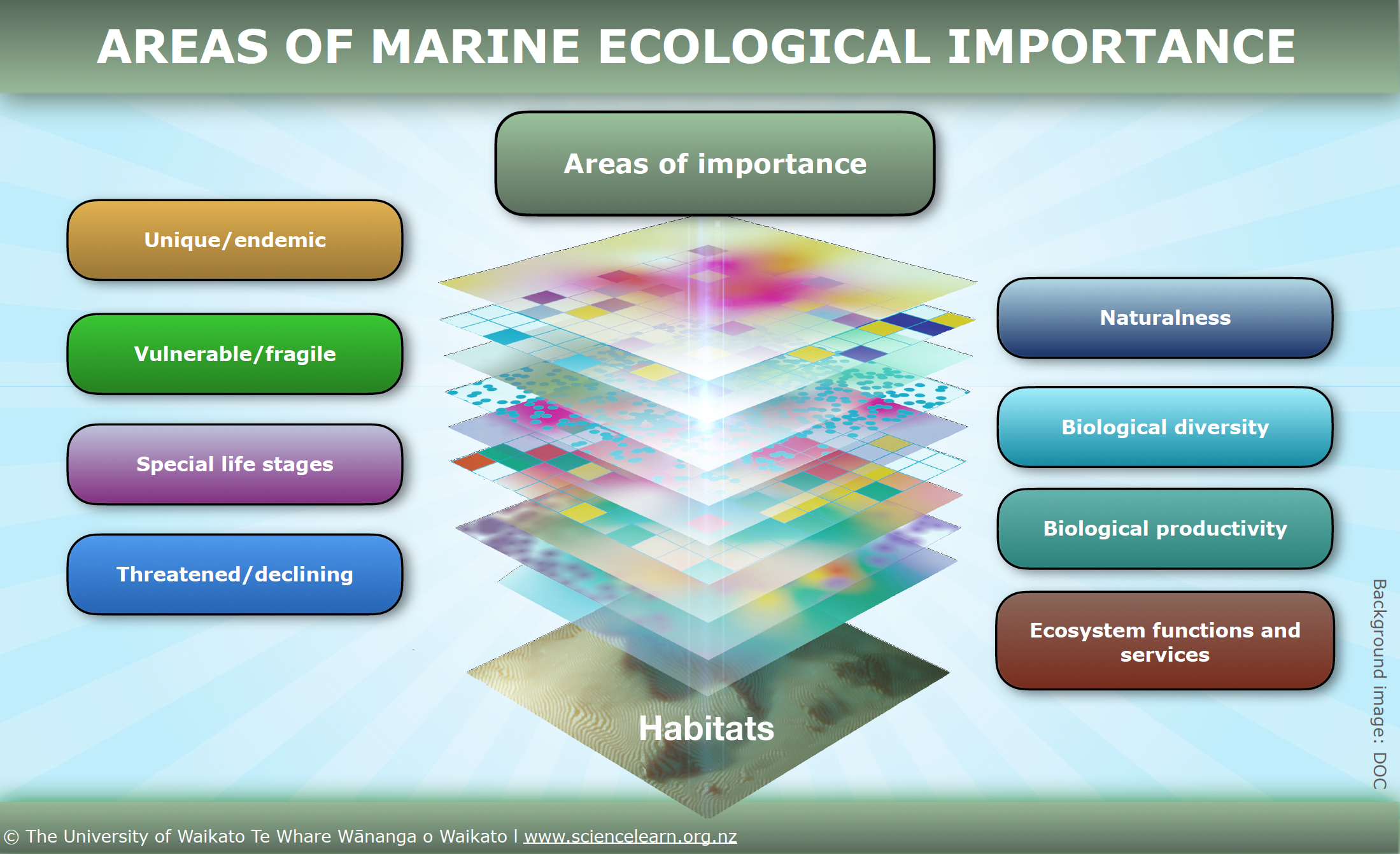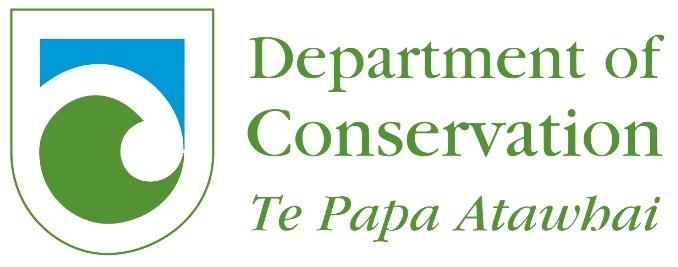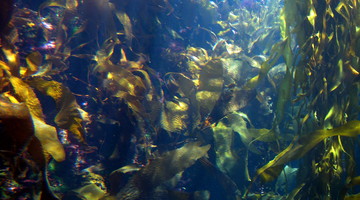Discover the nine considerations used to identify areas of marine ecological importance.

There are nine considerations used to identify areas of marine ecological importance. They provide a holistic way to identify potential conservation areas – going beyond habitat to consider the entire water column from seafloor to water surface.
To use this interactive, move your mouse or finger over any of the labelled boxes and click to obtain more information.
Transcript
Areas of importance
The ocean is a large and interconnected place, making research a difficult task. Our primary tool for learning about the ocean is by mapping habitats, which has many advantages. It is relatively cheap and easy to collect data, and it provides a reliable estimate of biodiversity. A habitat classification helps to estimate species richness and prioritise areas for conservation.
However, there have been instances where habitat mapping hasn’t been sufficient to protect important ocean features. For this, we need more advanced ways to identify areas of ecological significance.
Ecologically important areas are used in resource management and marine protection. The goal is to go beyond measuring the number and type of habitats to identify which areas are important to conserve based on nine considerations.
Such merits could be how unique the organisms within it are, their conservation status (whether they are threatened or endangered) or how much they are impacted by human activity.
This method provides a more holistic way to identify potential conservation areas. We go beyond the seafloor to consider the entire water column – from sediments to surface. This is achieved by combining all the known studies on an area and building a map of the area. Each type of data is represented as a separate layer, which are added together to achieve a final map in 3D.
Download the Department of Conservation infographic as a PDF.
Copyright: Department of Conservation
Unique/endemic
Being isolated in the South Pacific Ocean, we have an enormously high rate of endemism – species that are only found here. This measure helps to ensure that the plants, animals and habitats that are unique or rare within our oceans are given special consideration for protection.
There are areas where biodiversity is considered irreplaceable – no other place is quite the same. Considering uniqueness and rarity helps to prioritise species that are iconic or special. Just as we work on land to conserve the kiwi or kākāpō, we strive to protect unique marine species that could otherwise be lost forever.
This consideration extends to unique physical features, such as the Kermadec Trench, which is the second-deepest ocean trench in the world. It also includes unique or rare habitats and ecosystems, such as the cold water coral gardens of Fiordland.
Download the Department of Conservation infographic as a PDF.
Copyright: Department of Conservation
Vulnerable/fragile
Some habitats and species are resilient and able to recover from damage, while others are fragile or slow to recover. The majority of biogenic habitats are considered vulnerable, fragile, sensitive or slow to recover. Fragile ecosystems are particularly threatened by human activities, such as anchors dragging across the seafloor.
Some, such as bryozoan beds, take centuries to form and may not show signs of recovery even decades after they have been made off-limits to human activity. Others, like seagrass and kelp forests, are slightly more resilient to activities like bottom-trawling but more sensitive to impacts from the land such as chemical contaminants in stormwater run-off.
Species can also be considered when assessing vulnerable areas. For example, some New Zealand shark species that have slow growth rates and long breeding cycles or lay small numbers of eggs are considered slow to recover. The same can be said for most deepsea species that have even slower growth rates. It will take centuries for the species and the ecosystems to recover from damage.
Download the Department of Conservation infographic as a PDF.
Copyright: Department of Conservation
Special life stages
An area will have special ecological value if it is found to be crucial to the development of a species at any stage of its life. Some species have preferences for certain areas to feed or breed, while others require some places to carry out their life cycles.
Scallops and mussels rely on secure areas to settle their larvae and are unable to if these areas are buried under sedimentation. Mussel spat will initially settle on fine branching algae. After growth, the juvenile mussels will move to adult mussel beds.
Habitats where fish spawn are nurseries that support the wide distribution of adult fish and in turn support commercial and recreational fisheries.
Important areas for life stages are not just for breeding and spawning. About half of the world’s species of whales migrate through New Zealand’s oceans each year, so the corridors where they migrate would be considered for ecological importance.
Download the Department of Conservation infographic as a PDF.
Copyright: Department of Conservation
Threatened/declining
Some organisms rely on specific areas to hunt, breed or nest. When a species is endangered or threatened, protecting the areas that are essential to its survival becomes increasingly important.
Seagrass is one habitat that is in decline in New Zealand. Our seagrass meadows consist of only one endemic species – Zostera muelleri or rimurēhia. Seagrasses trap fine sediments to improve water clarity and enrich the surrounding water with oxygen. They are nursery habitats for snapper and shellfish such as cockles and scallops. Globally, they are in decline – we are losing seagrass at 4–10 times the rate that we are losing tropical forests.
Tara iti, the fairy tern, is a critically threatened native species – only about 45 birds are left. They nest and raise their chicks in coastal sand dunes, making them very vulnerable to residential development and beach activities. Protecting coastal areas where they breed is vital to the survival of the species.
Download the Department of Conservation infographic as a PDF.
Copyright: Department of Conservation
Naturalness
As development increases and technology continues to allow human access to more-remote parts of the ocean, it is becoming increasingly important to conserve sites that are as close as possible to their natural, pre-human state. These become crucial reference sites that can be compared to areas of high human impact.
Today, many of the important marine protected areas are fragments of larger habitats that have been damaged. Some projects aim to restore these habitats, such as transplanting of seagrass beds or reseeding of mussels in the Hauraki Gulf. Restoration is an expensive and time-consuming process, so conservation of areas that have not yet been disturbed by human activities is an efficient and effective form of marine protection. Many of these areas are remote offshore islands.
Download the Department of Conservation infographic as a PDF.
Copyright: Department of Conservation
Biological diversity
Areas where a diversity of ecosystems, habitats or species are found are said to have high biological diversity (biodiversity).
Generally, communities with a higher diversity of species and habitat types will be more resilient to environmental changes and able to more quickly recover from disturbances.
Download the Department of Conservation infographic as a PDF.
Copyright: Department of Conservation
Biological productivity
Productivity refers to the cycling of nutrients and energy. Photosynthesis, which is the process where organisms produce sugars (energy) from sunlight and carbon dioxide, occurs in the upper layers of the ocean.
This primary productivity provides the basic food for all ocean ecosystems. Photosynthetic plankton are eaten by zooplankton, which are consumed by filter feeders such as kuku, which are consumed by fish and so on. Other producers can also take advantage of the decomposing marine life that sinks to the seafloor, digesting and releasing nutrients to continue in their cycles. Some biogenic habitats are among the most productive habitats on Earth – comparable to tropical rainforests.
However, not all forms of productivity rely on photosynthesis. For example, on deepsea hydrothermal vents where sunlight cannot reach, the primary producers are microbes that use a different technique to generate sugars. Instead of sunlight, they use the often-toxic chemicals seeping from the deepsea vents. These hydrothermal vents are among the most productive deepsea ecosystems.
Download the Department of Conservation infographic as a PDF.
Copyright: Department of Conservation
Ecosystem functions and services
Ecosystem services are the many benefits that humans receive from functional ecosystems. These can be:
- provisioning – such as the harvesting of food from fisheries
- protecting – such as the sequestration of carbon, which slows global warming or filtration of pollutants from the water
- cultural – such as the enjoyment of diving or boating or our relationship to the ocean through our ancestors.
Soft-sediment habitats cover about 70% of the world’s seafloor. On the surface, they may not appear to be thriving ecosystems, but they perform many crucial functions. Soft sediments provide habitats for many other creatures and play an important role in nutrient recycling.
Download the Department of Conservation infographic as a PDF.
Copyright: Department of Conservation
Acknowledgment
This resource is another great collaboration between the Department of Conservation and the SLH. Infographics and text are supplied by DOC.



